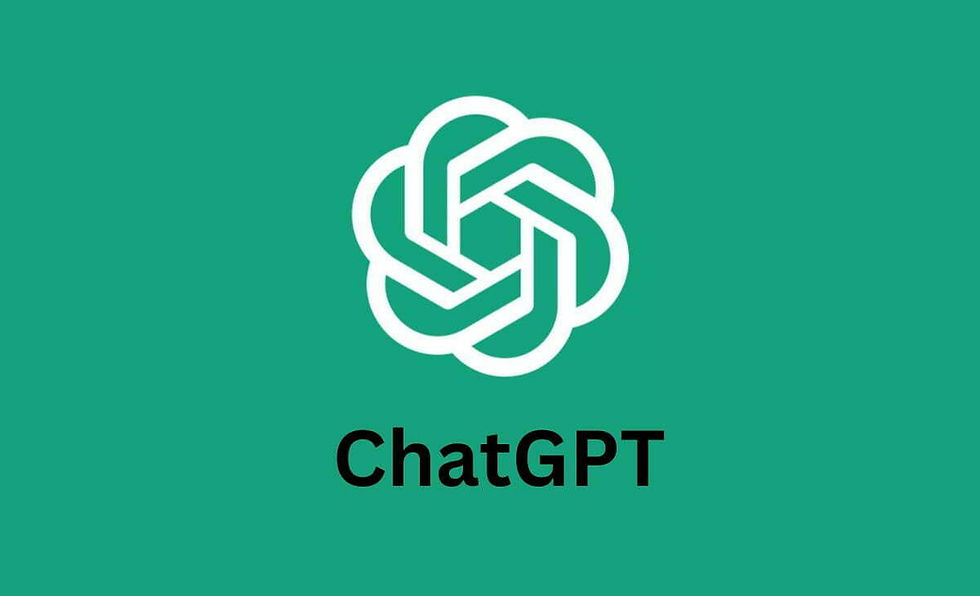ChatGBT
- The International
- Jun 11, 2023
- 3 min read

The next generation of artificial intelligence!
Photographs: ChatGPT / Unsplash
Text: Mariano Anthony Davies
ChatGPT (Generative Pre-trained transformer) is a general-purpose chatbot that uses artificial intelligence to generate text after a user enters a prompt developed by tech startup OpenAI. The latest chatbot uses GPT-4, a large language model that allows deep learning to produce human-like text.
ChatGPT, OpenAI's text-generating AI chatbot, has taken the world by storm. It can write essays, code and even more if given short text prompts - hyper-charging productivity. However, it also has a potentially negative side.
Potentially negative use
Writing an essay aims to prove you can think, so this short circuits the process and defeats the purpose. But, again, in terms of consequences, if we cannot let people carry out homework assignments because we no longer know whether they are cheating or not, that means that everything has to happen in the classroom and must be supervised.
More assignments must then be done orally, and what does that mean? It means that the learning process will become much more expensive - at a time when we are trying to do the opposite. The consequences for higher education could potentially be devastating in terms of the way tertiary education as we know it today is carried out.
Who owns OpenAI?
OpenAI Inc. is a nonprofit organisation whose sole controlling shareholder is OpenAI LP. OpenAI LP, despite being a for-profit company, retains a formal fiduciary responsibility to OpenAI Inc.'s nonprofit charter.
The CEO behind the company that created ChatGPT (Sam Altman) believes that this type of artificial intelligence technology will reshape society as we know it.
Elon Musk disowned OpenAI, the nonprofit organisation that he helped launch. This organisation is responsible for the AI sensation ChatGPT, which Microsoft is now effectively controlling.
Business community impact
There seems to be general agreement that this type of tool's impact will increase, and its use and effectiveness have expanded dramatically since its launch just a few months ago. For example, major brands experiment with AI to generate ads and marketing copy.
Microsoft has incorporated OpenAI's GPT models into Microsoft Office, Microsoft Teams and Bing. They also use OpenAI technology to improve their Bot Framework, a development platform for building conversational agents. In addition, they have announced that they will invest USD 10 billion in this new technology.

OpenAI GPT-4
OpenAI is also heavily investing in the technology. ChatGPT was recently super-charged by a new GPT-4 model - the latest language-writing model from OpenAI's labs. Paying ChatGPT users have access to GPT-4, which can write more naturally and fluently than the model that previously powered ChatGPT.
In addition to GPT-4, OpenAI recently connected ChatGPT to the Internet with plugins available for users and developers in the alpha test phase.
The history of artificial intelligence
Alan Turing was The first person who brought this type of technology to everyone's attention. His research in the early 1950s laid the foundation for modern computer science at a time when AI was still a thing out of fiction novels, but it was enough to get more brilliant minds on board. Among those who developed an interest was John McCarthy, who coined the term "artificial intelligence" in 1956.
McCarthy and his colleagues set up an Artificial Intelligence project at MIT two years later. The future of AI research was starting to look bright but was still in its early development phase. Then, in the 1990s, advancements in machine learning and natural language processing (NLP) resulted in renewed interest in artificial intelligence.
Over 65 years after Turing's breakthrough paper, the rapid expansion of AI systems raised a few eyebrows. It also made some people worried about the direction it was heading.
However, in 2015, CEO Sam Altman and business "magnet" Elon Musk spearheaded an initiative for safe and open AI development. This was when the history of the company OpenAI began to take shape. Three years later, the company released a paper, "Improving Language Understanding by Generative Pre-Training", - introducing the concept of a Generative Pre-trained Transformer (GPT).
In a nutshell, GPTs are neural networks—machine learning models inspired by the structure and function of the human brain. They are trained on a large dataset of human-generated text that can be used to perform many functions like generating and answering questions - among other things.









